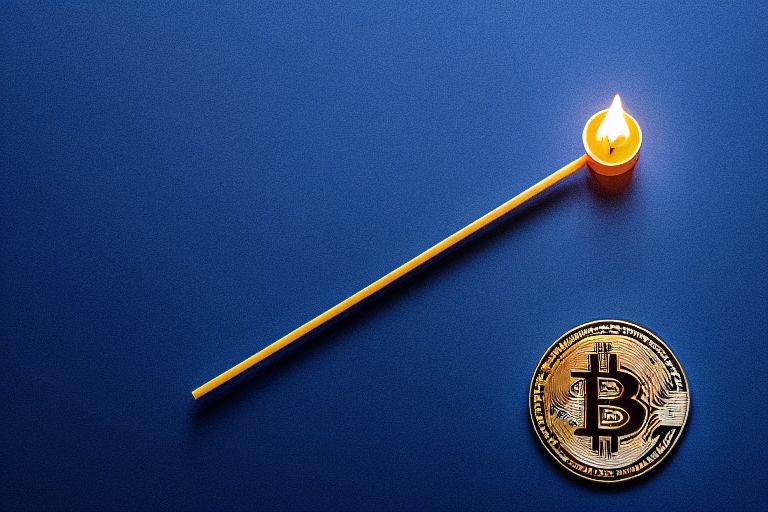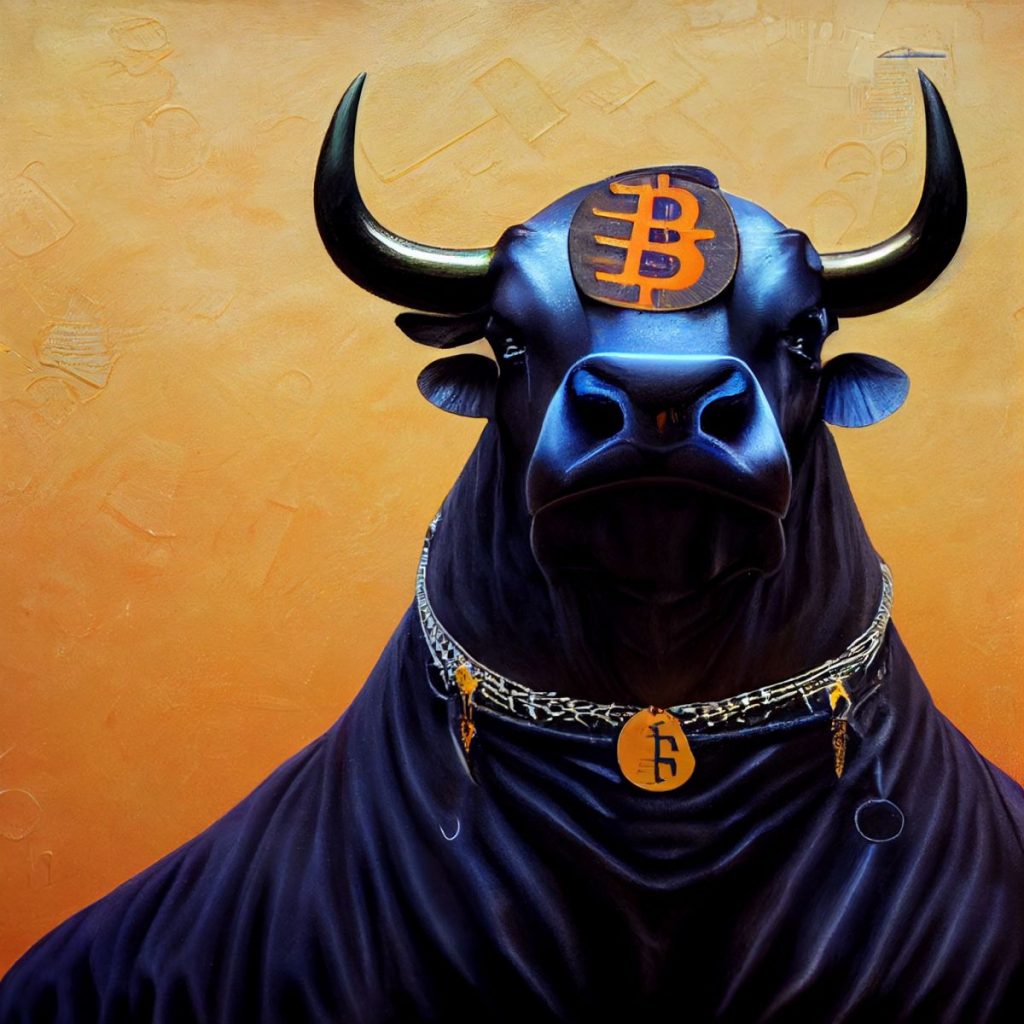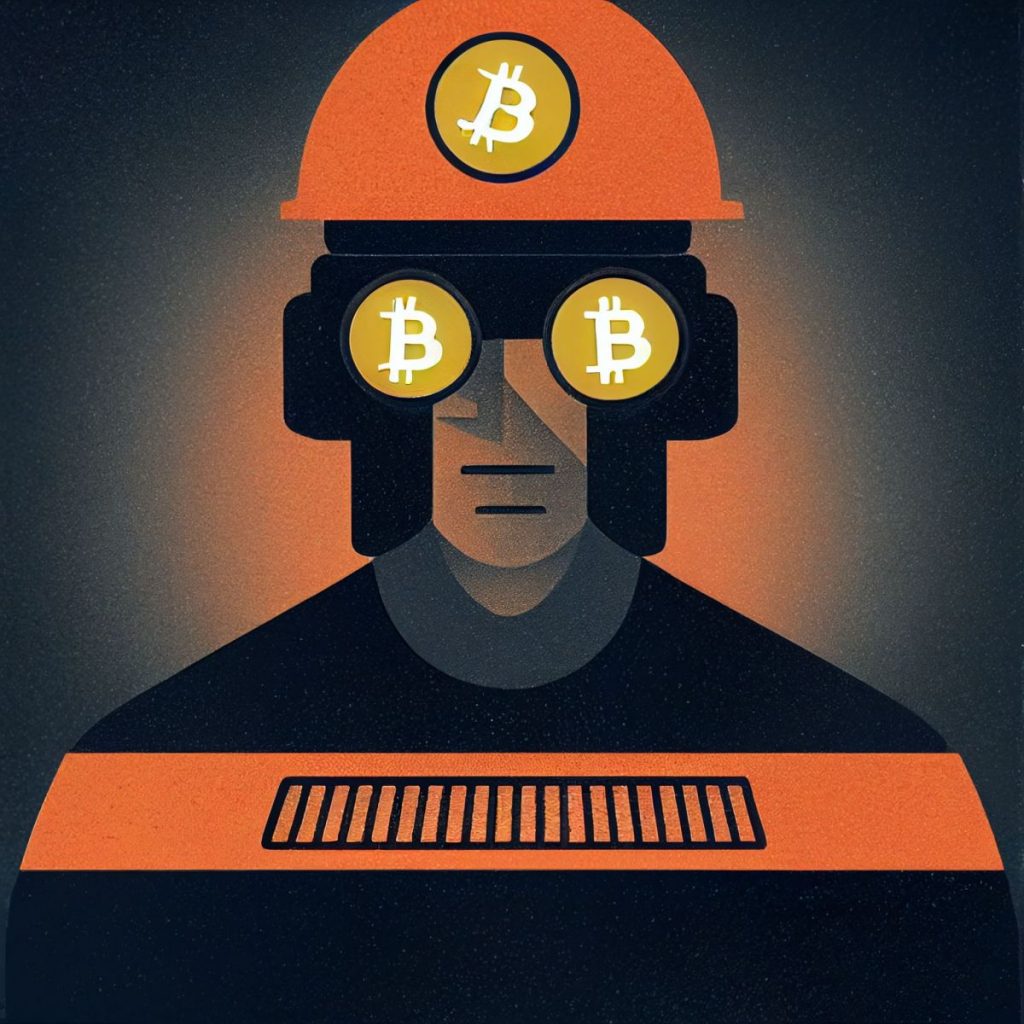The Bitcoin Blockchain: A Beginner’s Guide

In Brief
The bitcoin blockchain is a decentralized, distributed ledger that underlies the Bitcoin network
The Bitcoin blockchain’s decentralized network is lauded for its security and immutability
If you’ve heard of Bitcoin, you don’t understand how it works. In this guidepost, we will discuss the basics of the Bitcoin blockchain and explain how it works. We will also discuss some benefits of using the blockchain.

Introduction
The Bitcoin blockchain is a decentralized, distributed ledger underlies the Bitcoin network. It records all Bitcoin transactions in a publicly viewable, immutable log. Transactions are grouped into blocks, which are then chained together chronologically to form the blockchain.
The Bitcoin blockchain serves as the foundation for other applications beyond cryptocurrency. These include smart contracts, decentralized exchanges, and more. The flexibility of the blockchain enables developers to build a wide range of applications on top of it. This has led to a vibrant ecosystem of startups and businesses.
The Bitcoin blockchain’s decentralized network makes it lauded for its security and immutability. There is no central point of control or failure. Instead, the network is powered by a global network of computers running the Bitcoin software. This distributed network ensures that the blockchain cannot be tampered with, as there would need to be a consensus amongst all participating computers.
The Bitcoin blockchain is an intriguing and innovative technology with much potential. It has already revolutionized how we think about money and data. We can expect to see more applicable blockchain applications as it continues to gain mainstream adoption.
How Does a Blockchain Work?
Understanding how a blockchain works help first to understand the components that make up a blockchain.
The components that make up a blockchain are:
Blocks: A block is a list of new transactions. As the blocks are added to the chain, their contents become more difficult to alter.
Transactions: A transaction is a record of an exchange between two parties. Transactions are bundled up into blocks and added to the blockchain.
Transaction Process
When a transaction is made, it is broadcast to the network and verified by the computers on the network. Each computer then timestamps and adds the transaction to its digital ledger. Once a transaction is added to a ledger, it cannot be altered or deleted. This creates a permanent, secure record of all transactions made on the blockchain.
Blockchain Decentralization: One of the key features of blockchain technology is its decentralized nature. Unlike a traditional database housed on a single server or group of servers, a blockchain is distributed across a large network of computers.
This decentralized structure makes blockchain much more secure against hacking and tampering, as there is no central point of attack. It also allows the blockchain to run without needing a third party to approve or verify transactions.
Transparency: Another key feature of blockchain is its transparency. All transactions made on the blockchain are public and can be viewed by anyone with access to the network. This allows complete transparency of all transactions made on the blockchain.
The Bitcoin blockchain is the first and most well-known example of a blockchain. However, many other types of blockchains are being developed for different purposes.
Miners are people (or computers) who confirm transactions by solving complex mathematical problems. A new block is added to the blockchain when a miner solves a problem.

Now that we understand the components of a blockchain let’s take a look at how a blockchain works.
Each block contains a hash, a unique code that identifies the block. Blocks also contain transactions, which are records of exchanges between two parties.
When a block is added to the blockchain, it becomes very difficult to change the contents of the block. That’s because each block contains its hash and the hash of the block before it. Changing the contents of a block would mean changing its hash, which would also mean changing the hash of the block before it, and so on. That’s why it’s so difficult to change the contents of a blockchain.
Miners confirm transactions by solving complex mathematical problems. When a miner solves a problem, a new block is added to the blockchain, and the miner is rewarded with cryptocurrency.
The difficulty of the mathematical problems that miners have to solve increases as more blocks is added to the blockchain. That’s because there can only be one correct solution to each problem. As more miners join the network and try to solve the problems, it becomes more difficult to find a solution.
Is Blockchain Secure?
Yes, blockchain is a secure way to track and store data. Transactions made on the blockchain are verified and timestamped by the computers on the network, making it impossible to alter or delete them.
Overall, blockchain is a transparent and secure way to track data. Its decentralized nature makes it more resistant to hacking and tampering, and its transparency allows complete transparency of all transactions made on the network.
Blockchain is a compelling technology with the potential to disrupt a wide range of industries. However, it is still in its early stages, and it will be interesting to see how it develops over time.
Short story of Bitcoin blockchain
In their paper “How to Time-Stamp a Digital Document,” Stuart Haber and W. Scott Stornetta outlined the concept of blockchain technology in 1991. In this essay, they detailed how to preserve information using a continuous chain of timestamps securely.
Bitcoin was initially designed to make it possible to trade Bitcoin cryptocurrency. But the people who first started using it and those who created it realized that it could do much more. So they ensured the blockchain could record more than just information about how the token moves around.

The beauty of blockchain is that it allows for secure, tamper-proof data recording without needing a centralized authority. This has numerous applications beyond cryptocurrency, including smart contracts, supply chain management, and voting systems.
The Bitcoin blockchain is the first and most well-known example of a blockchain. It has been operational since 2009 and is today’s most widely used blockchain. The Bitcoin blockchain is a public ledger that records all Bitcoin transactions. It is decentralized and not stored in any location but spread across a computer network. This makes it incredibly difficult to hack or manipulate.
The Bitcoin blockchain has been incredibly successful and inspired other blockchains’ development. Ethereum, for example, is a blockchain designed to support smart contracts. Blockchains have the potential to revolutionize many industries and are already beginning to do so.
Bitcoin vs. Blockchain
Bitcoin and blockchain technology have been thrust into the spotlight in recent years. As the world’s leading cryptocurrency, Bitcoin has generated a lot of buzz, with some people touting it as the future of money and others warning of its potential bubble. Meanwhile, blockchain is slowly gaining mainstream adoption, with major corporations and financial institutions beginning to explore its potential applications.
So, what’s the difference between Bitcoin and blockchain? Here’s a quick rundown:
Bitcoin is a digital currency that uses cryptography to secure transactions and control the creation of new units. Blockchain is a distributed database that stores transaction records and allows for secure, transparent, and tamper-proof data monitoring.
While Bitcoin relies on blockchain technology to function, the two are not the same thing. Blockchain can be used for various applications beyond cryptocurrency, such as identity management, supply chain tracking, etc.
The key difference between Bitcoin and blockchain is that Bitcoin is a decentralized currency that relies on peer-to-peer transactions. In contrast, blockchain is a distributed database that can store data securely and transparently. While Bitcoin has generated a lot of hype, it’s still unclear whether it will ultimately succeed or fail. On the other hand, Blockchain has already begun to gain mainstream adoption and is widely considered a game-changing technology with vast potential.
What is a Block?
A block records some or all of the most recent Bitcoin transactions that have not yet been recorded in any prior blocks. Once a block has been added to the end of the blockchain, it is very difficult to go back and alter the contents of the block. That’s because each block contains its own hash and the hash of the block before it. Hash codes are created by a math function that turns digital information into a string of numbers and letters. If that information is edited in any way, the hash code also changes.

So, if someone tried to alter a transaction that had already been recorded in a block, they would have to change that block’s hash and the hash of every subsequent block in the blockchain. That’s virtually impossible. So once a block is added to the blockchain, it becomes very difficult to edit and verify the transaction data’s authenticity.
How is a Block Added to the Blockchain?
Mining is how new blocks are added to the blockchain. Miners are rewarded with bitcoin for verifying and committing transactions to the public ledger. Essentially, they verify previous Bitcoin transactions and create new blocks to be added to the blockchain.
Miners use special software to solve math problems and are issued a certain number of bitcoins in exchange. This provides a smart way to issue the currency and incentivizes more people to mine.
As more miners join, the rate at which blocks are created increases, making it harder for individuals to solve puzzles and earn rewards. To control the creation of new blocks, Bitcoin uses what’s known as proof-of-work. Miners must first solve a complex math problem to create a new block. The difficulty of this problem adjusts so that, on average, a new block is added every 10 minutes.
Bitcoin Blockchain Size
The Bitcoin blockchain is a public ledger that records all bitcoin transactions. The blockchain is constantly growing as “completed” blocks are added with a new set of recordings. Each block contains a cryptographic hash of the previous block, a timestamp, and transaction data. Bitcoin nodes use the blockchain to differentiate legitimate Bitcoin transactions from attempts to re-spend coins that have already been spent elsewhere.
As of May 2018, the size of the Bitcoin blockchain was 154 gigabytes.
The Bitcoin blockchain is the largest and most well-known blockchain in the world. Its size has grown exponentially in recent years as more and more people have started using bitcoin.

The blockchain is a critical part of the bitcoin network, and its size is one of the key factors that makes bitcoin so secure. The larger the blockchain, the more difficult it becomes for attackers to tamper with it.
While the size of the Blockchain can be seen as a positive attribute, it also poses some challenges. For example, storing the Blockchain takes up a lot of space and can be expensive. Additionally, the larger the Blockchain gets, the longer it takes for new transactions to be added, which can lead to delays in processing payments.
Despite these challenges, the Bitcoin blockchain continues to grow rapidly. This is thanks to the increasing popularity of bitcoin and the ever-growing number of people and businesses using it.
The Bitcoin blockchain is expected to continue to grow in size as more people and businesses start using bitcoin. This will help ensure that the bitcoin network remains secure and efficient.
Does Blockchain Technology Only Work with Bitcoin?
No, blockchain technology can work with any digital asset. Bitcoin is the first and most well-known application of blockchain technology, but there are many other potential uses for this innovative technology. Blockchain technology has the potential to revolutionize a wide variety of industries beyond finance, including healthcare, supply chain management, voting, and more.
The key advantage of blockchain technology is that it is a decentralized system that cannot be controlled or manipulated by a single entity. This makes it an attractive option for industries where trust and transparency are paramount.
FAQs
The bitcoin blockchain is a digital ledger that keeps track of all Bitcoin transactions. It constantly grows as “completed” blocks are added with a new set of recordings. Each block contains a cryptographic hash of the previous block, a timestamp, and transaction data.
A blockchain is a distributed database that allows for secure, transparent, and tamper-proof record-keeping. Blockchain software allows decentralized applications (DApps) to be built and run without a central authority.
A blockchain wallet is a digital wallet that allows you to store, send, and receive cryptocurrencies. The main advantage of a blockchain wallet is that it is secure and decentralized. This means that your funds are safe from hackers and government interference. Additionally, blockchain wallets are often free to use and easy to set up.
Blockchain programming is developing and implementing applications that run on a blockchain platform. Blockchain programming requires a deep understanding of how blockchain technology works and how it can be used to develop innovative new applications.
Distributed ledger technology (DLT) is a digital system for recording the transaction of assets in which the transactions and their details are recorded in multiple places, typically simultaneously. This increases security and transparency as there is no central point of control or single point of failure.
Bitcoin is a cryptocurrency on the blockchain, a decentralized ledger of all cryptocurrency transactions. Blockchain is the underlying technology that enables the existence of Bitcoin and other cryptocurrencies. So, while Bitcoin is a specific application of blockchain technology, blockchain is the wider concept that encompasses Bitcoin and other cryptocurrencies.
Conclusion
While blockchain technology was initially developed to support the Bitcoin network, it is now used in various other applications. For example, Ethereum is a platform that uses blockchain technology to power its smart contracts system. Other projects are using blockchain technology to create new types of digital assets, such as Filecoin and Eco.
Blockchain technology is still in its early stages of development, and it will likely take some time for its potential uses to be realized. However, the possibilities are endless, and it is clear that this innovative technology has the potential to change the world.
Related articles:
Disclaimer
In line with the Trust Project guidelines, please note that the information provided on this page is not intended to be and should not be interpreted as legal, tax, investment, financial, or any other form of advice. It is important to only invest what you can afford to lose and to seek independent financial advice if you have any doubts. For further information, we suggest referring to the terms and conditions as well as the help and support pages provided by the issuer or advertiser. MetaversePost is committed to accurate, unbiased reporting, but market conditions are subject to change without notice.
About The Author
Damir is the team leader, product manager, and editor at Metaverse Post, covering topics such as AI/ML, AGI, LLMs, Metaverse, and Web3-related fields. His articles attract a massive audience of over a million users every month. He appears to be an expert with 10 years of experience in SEO and digital marketing. Damir has been mentioned in Mashable, Wired, Cointelegraph, The New Yorker, Inside.com, Entrepreneur, BeInCrypto, and other publications. He travels between the UAE, Turkey, Russia, and the CIS as a digital nomad. Damir earned a bachelor's degree in physics, which he believes has given him the critical thinking skills needed to be successful in the ever-changing landscape of the internet.
More articles

Damir is the team leader, product manager, and editor at Metaverse Post, covering topics such as AI/ML, AGI, LLMs, Metaverse, and Web3-related fields. His articles attract a massive audience of over a million users every month. He appears to be an expert with 10 years of experience in SEO and digital marketing. Damir has been mentioned in Mashable, Wired, Cointelegraph, The New Yorker, Inside.com, Entrepreneur, BeInCrypto, and other publications. He travels between the UAE, Turkey, Russia, and the CIS as a digital nomad. Damir earned a bachelor's degree in physics, which he believes has given him the critical thinking skills needed to be successful in the ever-changing landscape of the internet.


















































